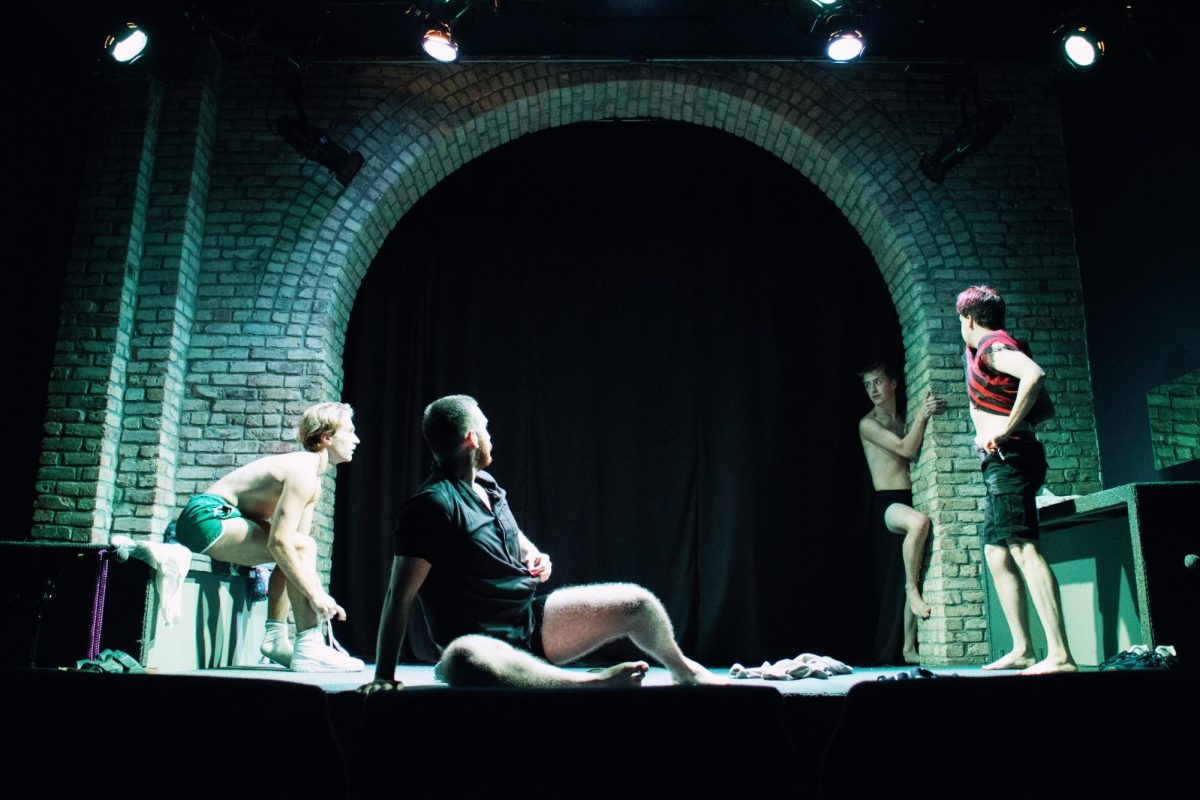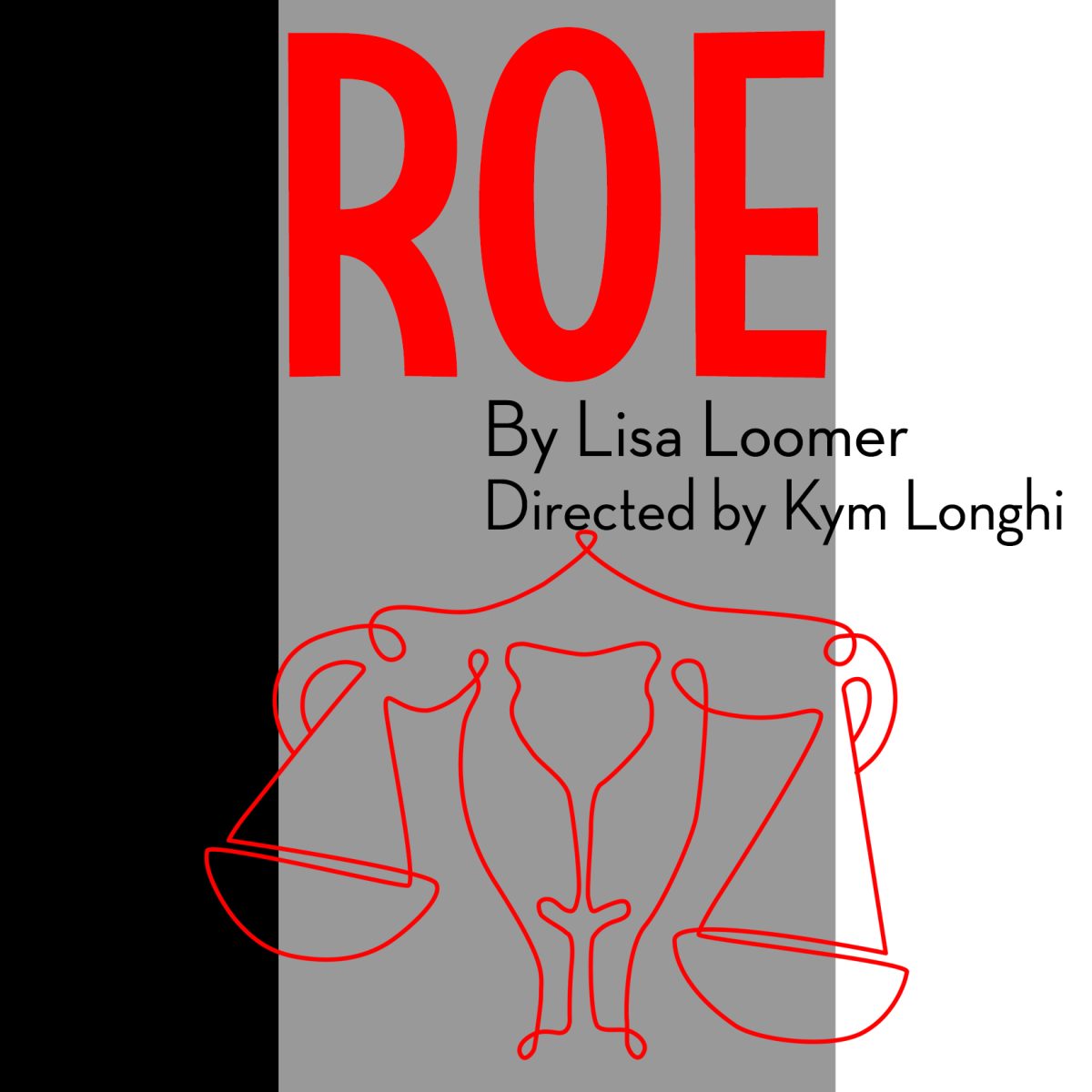There are no differences,” alleged the philosopher William James. “But differences of degree.” For a New York-based theater troupe, however, there was darkness and then there was God.
This is evident within the first five minutes of Elevator Repair Service’s production “Room Tone,” opening this weekend at the Southern Theater. A gentleman onstage, yoked by honesty and shrouded in darkness, begins his story: “A while ago, I went through an experience that almost drove me mad.”
Unrequited love, it turns out, was the catalyst. She brought him joy and pain simultaneously. Her beauty drove him to feverish delight. Or what some would call psychotic frenzy. He keeps a lock of her hair and pictures as memorabilia. At some level, he confides, he even empathizes with the lovers who murder their sweethearts out of violent love.
The strangeness of the opening monologue is only augmented by his supernatural follow-up: “The queer thing is the sudden way in which it all stopped. When, just as if some outside power had laid hold of me, I found myself running to my room.”
What else can one expect from a play that is part of the Walker Art Center and Southern Theater’s “Out There 16”? “Out There 16” is the annual series of stratospheric performance alternatives that defy definition, and sometimes gravity. In 2000 Elevator Repair Service came to Minneapolis with a piece titled “Total Fictional Lie,” a sure sign of their elusiveness.
The roller coaster of emotions that “Room Tone” offers owes much to its collage approach. The play is based loosely on the metaphysical works of the two brothers, William and Henry James.
Co-directors Steve Bodow and John Collins conceived of “Room Tone” through a series of lighting schemes Collins was interested in applying. Bodow just happened to be reading the philosopher William James’ “Varieties of Religious Experience,” when the idea was born.
“I wanted to make a piece that was dark and work with really low light,” Collins said. “I am a big fan of some pieces by James Turrell. I was interested in working with a theatrical lighting design, something that had that look to it.”
Bodow and Collins, then in search of a narrative to further advance the metaphysical structure, turned their attention to William’s younger brother, author Henry James. His phantasmagoric story “The Turn of the Screw” revolves around the haunted life of a governess as she cares for two children in a mansion.
Elevator Repair Service’s pieces, Collins said, are often invented by importing different source materials. The hybrids that evolve become a structure for the directors to work with. Nevertheless, he stressed the importance of the ensemble in the process.
“But the ensemble is one of the main factors,” Collins said. “And so we have to bend and change the story to fit the ensemble.”
Take, for example, a scene from Henry James’ story. A lonesome and preoccupied bachelor (Charlie Schroeder) requests the service of a governess for a niece and nephew that have been left in his care. When the future governess (Maggie McBrien) arrives for an interview, the house is dark, save the smallest amount of light from the open door. The couple begins an interview off-stage – the audience hears them conversing – when an ominous presence slams the door shut. Now cloistered in darkness, the interview continues in absurdity, as if nothing had happened. The lady tells the man of herself: “I remember the night and very spot where my soul opened into the infinite; the deep that my own struggle had opened up within, being answered by the unfathomable deep without.”
Henry James’ unnerving ghost story, meshed with these zealous monologues and the actors’ deadpan delivering, offers some captivating moments of laughter. And yet the dark, emotional tenuousness that co-director John Collins struggles to achieve still remains palpable.
Some of the creepiest moments, after the lights come on, happen in the cold silence and plodded time between ambiguous dialogues.
The governess, haunted by strange sounds, seems to think someone is in the house and is in quite a fearful state. In the following conversation, with almost no emotion, she confronts the young Flora (Katherine Profeta):
Governess: Did you here anyone walking around?
Flora: Well, I did hear someone.
Governess: Did you see anyone?
Flora: No, did you?
Governess: Who would I have seen?”
The audience, sensing the amorphous tending towards the absurd, doesn’t know whether to be fearful or amused. Then the couple, with sad unconcern, watches Flora’s pet lobster drink from a teacup while a dub-over of slurping and smacking noises plays.
















